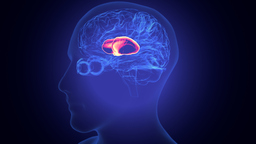High Density Electrophysiological Predicts Span of Therapeutic Tissue Activation Volumes in Subthalamic Deep Brain Stimulation …
TECHNOLOGY NUMBER: 2019-221

OVERVIEW
A novel definition of electrophysiological features of subthalamic sites- Associations between therapeutic tissue activation and electrophysiologic features
- A predictive clinical tool to aid DBS programming and targeting for individual patients
BACKGROUND
Deep brain stimulation (DBS) is a surgical therapy during which electric current is passed through electrodes implanted in the subthalamic nucleus to treat motor symptoms of Parkinson Disease (PD).This treatment is commonly given when first-line treatment with dopamine replacement therapy loses its efficacy. DBS may significantly improve the symptoms of Parkinson Disease like tremor, rigidity, and akinesia. The mechanism for relief of motor symptoms from Parkinson Disease involves activation of precise volumes of neural tissue. While electrophysiological and anatomical correlates of clinically effective electrode sites have been described, therapeutic stimulation likely acts through multiple distinct neural populations. Therefore, a need exists to characterize the full span of tissue activation and to define the neural signatures of therapeutic tissue activation volumes.
INNOVATION
Researchers at the University of Michigan have applied a data driven approach to a training set of electrophysiological features of subthalamic sites to identify associations between regions of therapeutic tissue activation and broadband electrophysiological features. The investigators defined wide variations in the distribution of that activation across the electrophysiologically defined subthalamic nucleus. This finding demonstrates the importance of personalized targeting and validates a set of electrophysiological signatures to predict therapeutic activation volumes. Tissue activation volumes (VTAs) may be defined using a predictive clinical tool to aid DBS programming and targeting for individual patients. This novel approach can be used to improve the efficiency of deep brain stimulation programming and highlight specific neural oscillations of physiological importance.